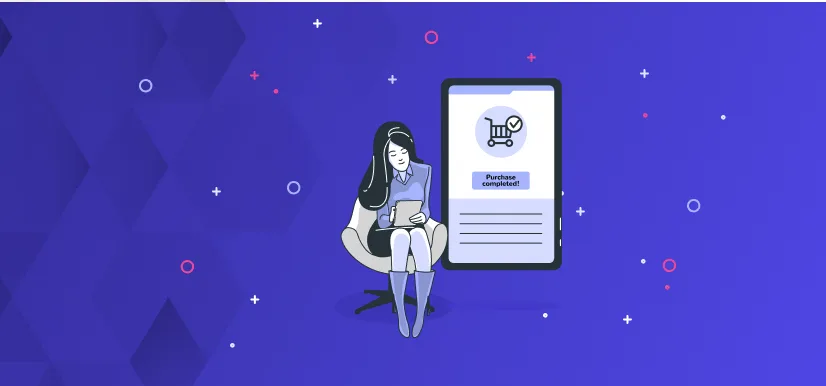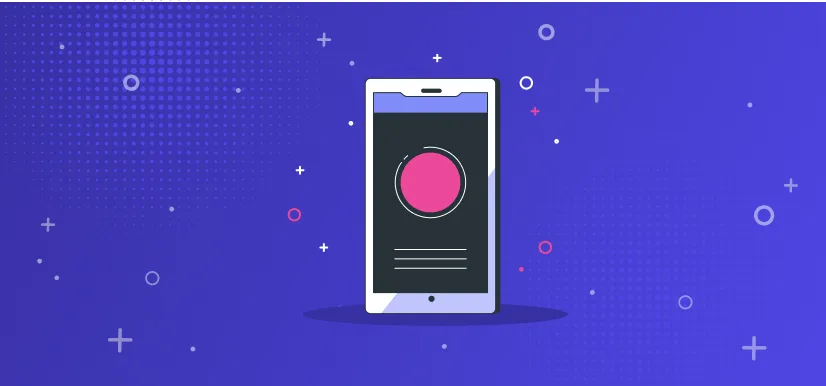- Experimentation,
- Commerce,
- Customer Experience
Leveraging A/B Testing to Drive E-commerce and Customer Satisfaction


Many businesses struggle with growth as the e-commerce industry expands. With over 24 million e-commerce sites worldwide, customers are spoiled by the choices available. Therefore, the key to cutting through the noise, fostering customer satisfaction, and driving growth as an e-commerce business is to provide desired experiences for users. For instance, 64% of customers consider customer experience more than price when making a purchase.
It’s not enough to improve consumer experiences based on what you “think” they need. You must actively listen to buyers’ preferences and discover what works, which is where A/B testing comes in. A/B testing is a practical way to know what works best for users to create experiences that target what they want.
This article examines what A/B testing is and how you can leverage it to boost customer satisfaction and facilitate your business’s success.
Let’s take a look.
What Is A/B Testing?
A/B testing, also referred to as split testing, is a technique that involves splitting your target customers to test the effectiveness of various campaign strategies and methods. This means that rather than designing a product, improving your website, and introducing a feature based on intuition, you put different variables to the test with real users.
For example, suppose you have two similar marketing strategies and are unsure of the most effective method. In that case, you can test version A with a segment of your target audience and version B with another similar segment of your audience over a specific period. The result of each test will showcase which variable (strategy, feature, etc.) performed better over time.
A/B testing is crucial to building successful marketing campaigns because it gives real insights into your customers' wants and preferences. In addition, since audiences behave differently, you’ll have precise analytics on every user’s experience with A/B testing. You can use A/B testing for various purposes, including user experience and design testing.
User experience test: This test is structured to improve user experiences and enhance marketing efforts. For instance, if you want to know if putting every piece of information about your business on your home page will increase conversions, you can create an alternative page with this element while the existing home page stays. The current design is called “the control,” while the alternative design is “the challenger.” Testing both designs over a period reveals the page bringing the most conversions, enabling you to make informed decisions.
Design test: A/B testing aimed at improving designs is critical to enhancing customers’ experiences on your website. For instance, if you want to test if larger fonts appeal better to users, you can create an alternative site and test it alongside your existing website. The site that generates more engagement over a while is the winner.
A/B testing allows you to meet your customers’ wants and preferences by testing various variables among users. Consequently, it facilitates customer satisfaction and drives growth.
7 Ways to Leverage A/B Testing to Drive E-commerce Growth and Customer Satisfaction
Many e-commerce businesses struggle with customer satisfaction and overall growth. Here’s how to harness A/B testing to improve customer experiences and drive growth for your business.
1. Test Your Website’s UX
Your website user experience (UX) is vital in creating positive user experiences. For instance, statistics reveal 66% of customers say a frustrating experience hurts their overall opinion of a brand. In addition, 55% of website visitors say a bad mobile experience makes them less likely to engage with a company, and 52% believe a terrible experience leads to disappointment in a brand.
This is why acquiring a degree in UX design is essential for designers looking to build desirable websites for their customers. Adequate knowledge of website UX helps you to create a positive website experience for visitors through effective A/B testing.
In addition, testing different elements of your sites helps you identify the best improvements that boost consumer satisfaction. For instance, minor color changes can significantly affect your click-through rate and sales. So, test different colors to see what works. How effective are the current color of your CTA button and your website’s overall color? Choose another variable and conduct A/B testing to identify the color that drives the most results.
Other website elements you can test with A/B testing include font, speed, headlines, and general website content. Finally, optimizing your website through A/B testing enhances your website’s performance and provides users with enjoyable experiences that satisfy and retain them.
2. Test the Website’s Accessibility
Accessibility increases website traffic, customer conversion, and satisfaction. Ensuring that no barrier prevents users from accessing and engaging your website is an effective way to drive growth for your brand. Your users want to feel included, so introducing features promoting accessibility helps them feel valued. It also increases the number of people that can access your business, consume your content and make purchases.
Design and content are crucial factors to consider when improving your website’s accessibility. But how do you know the best features to include in your website’s design and content? Conduct A/B testing.
Compare different variables to find what suits your audience the most. Does your optimized mobile-friendly website drive better results than your existing website? If it does, implement the newly optimized site for a better experience. In addition, if subtitled videos drive higher engagement than videos without captions, learn how to add subtitles to videos to promote the website’s accessibility and audience participation.
Research states 75% of Americans with disabilities report using the internet daily. Moreover, 80% of viewers are more likely to watch a video entirely with the sound off, and 92% of websites access the internet using their mobile phones. Therefore, tweaking your website’s mobile-friendliness and subtitles to suit your audience’s needs and preferences improves customer satisfaction and scales your business.
3. Run One Campaign at a Time and Test Both Variations Simultaneously
Testing multiple campaigns simultaneously leads to confusion and prevents accurate data tracking. However, focusing on one campaign at a time allows you to monitor results effectively without complicating the process and the outcome.
Moreover, testing both campaigns simultaneously is necessary to generate accurate results. If you test both campaigns at different times, it will be daunting to identify the factors influencing each variable. The only exception to this, however, is if your goal is to test the best periods to conduct a campaign.
For instance, if you want to know the best time to post on social media or send an email, you can test the various periods at different intervals to see the timing that works. However, remember to avoid testing multiple campaigns simultaneously. Instead, stick to one campaign at a time, and test both variables simultaneously.
4. Test Scheduling
A vital way to harness A/B testing perks is finding the best time to engage with your audience and post your content across several platforms. Posting at the periods your consumers are most active increases your engagement and visibility. It promotes audience interaction by ensuring they consume your content and share posts to reach a wider audience.
Conversely, posting when your audience is unavailable to consume your content leads to low engagement and conversions. Therefore, identify peak times through A/B testing. Do you think your content can perform better if posted at a different period? Post at other times, targeting both periods (the current and alternative times) to a diverse audience segment. Adopt the period with higher engagement and visibility to increase your brand awareness and engagement.
A/B testing identifies when your audience is most active so you can post at these periods for optimal results. However, the most engaging period for posts may be at an inconvenient time for you. In that case, use scheduling tools to post content at your audience's preferred time. This also works if the period differs based on location. You only need to identify the time difference in each area and schedule your posts appropriately.
Therefore, if you want more engagement and wonder about your audience’s most active time online, performing an A/B test can help you decide the right time to engage and post your content online for increased interaction and reach.
5. Test Different Promotion Strategies
Customers love promotions. For instance, promotions trigger online purchases for 89% of customers who use online promotions, and 91% of Americans want to receive promotional emails. When done right, promotions and other incentives are excellent ways to drive engagement, attract customers, and boost retention.
Choosing the right incentives boils down to what your customers want. So, if you want to upscale your promotions’ strategy and don’t know the best motivations to give customers, conduct A/B testing. Whether choosing between a time-limited or long-term offer, A/B testing will help you decide the most effective promotions that drive customer satisfaction.
Discounts and promotional offerings are only effective when tailored to your audience’s wants and needs. So, rather than choose a promotional offer based on guesswork, conduct A/B testing to decide the most effective promotions based on the performance of each offer.
6. Request Feedback
A/B testing supplies accurate analytics on the performances of the tested variables. However, besides quantitative data, you can harness qualitative data from real users to gain deeper insights into customers’ behavior and experiences. For example, if you conducted A/B testing on green and red call-to-action (CTA) buttons, and red CTA buttons performed better, you can ask consumers why they responded to red CTA buttons.
Surveys and polls are the most common and effective ways to get customer feedback. So, include a poll on your social media platforms and place exit surveys on websites to gain insights into customer behavior.
Consumer feedback improves customer satisfaction and sales. For example, users may say they filled out a one-page form rather than multiple form pages because it is easier. They may also respond to red CTA buttons because they are compelling and more noticeable. Understanding the reasons for specific reactions allows you to consider these factors when creating customer experiences.
So, ask customers for feedback after A/B testing. Do this with surveys, polls, interviews, etc. Identifying the “why” behind A/B testing results allows you to better understand customers’ expectations and challenges.
7. Take Action Based on the Result
A/B testing is only effective when you take action based on the results achieved. So, it doesn’t stop at testing both variables and deciding which works. First, you must disable the ineffective variation and implement the winner. Second, don’t alter the implementation based on your perception. Instead, adhere to the A/B analytics and adopt the winning variation for your marketing campaign.
If the existing campaign wins, retain the strategy and disable the alternative. The most crucial factor is implementing the variation with higher performance to enhance your users’ experience and promote customer satisfaction.
Satisfy Customers and Grow Your Business With A/B Testing
Customer satisfaction is crucial for growth. Satisfied buyers repeat purchases and refer others, increasing retention, generating new customers, and growing your business. Understanding the most effective strategies and campaigns with A/B testing allows companies to improve their consumer experiences for customer satisfaction and growth.
To do this, test your website’s user experience and accessibility. In addition, run a campaign simultaneously and test scheduling and promotion options. Finally, ask customers for their opinions and act on your A/B testing outcome. Follow these tips to maximize A/B testing benefits for your business’s growth.
Learn how to deliver unique and personalized customer experiences to increase conversions

